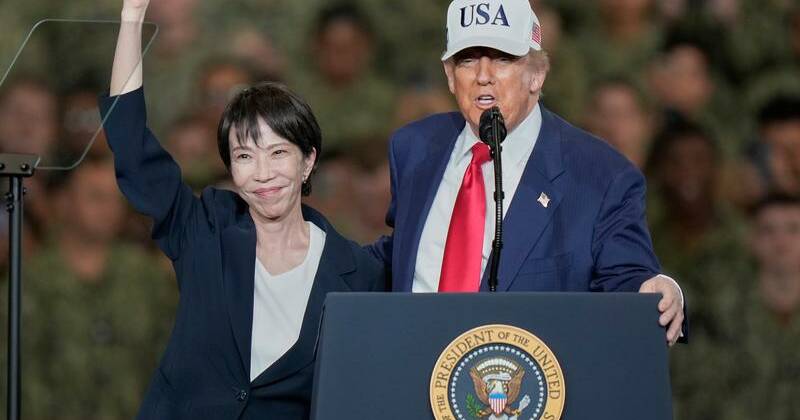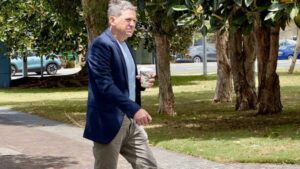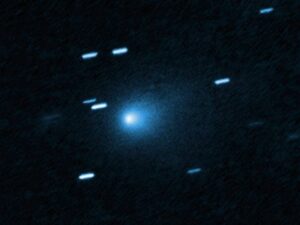
US President Donald Trump commended Japan’s first female Prime Minister Sanae Takaichi during his visit to Tokyo, where the two leaders signed significant agreements focused on trade and rare earth elements. This meeting, held at the historic Akasaka Palace on March 15, 2025, underscored Japan’s commitment to enhancing its military capabilities amid regional tensions.
Takaichi, a protégé of the late Japanese leader Shinzo Abe, expressed her admiration for Trump’s efforts to resolve global conflicts. According to Trump’s spokeswoman, Karoline Leavitt, Takaichi plans to nominate Trump for the Nobel Peace Prize due to his diplomatic endeavors. This gesture signifies a strengthening of ties between the two nations, particularly as Japan seeks to bolster its defense spending to two percent of its GDP in response to an increasingly assertive China.
The discussions included an anticipated package of US investments under a remarkable $550 billion agreement established earlier in 2025. This comprehensive deal is expected to cover various sectors, including shipbuilding and the purchase of US agricultural products such as soybeans and gas. These economic gestures may alleviate any demands from Trump for Japan to enhance its financial contributions to regional security.
During their meeting, Trump praised Takaichi, stating, “Everything I know from Shinzo and others, you will be one of the great prime ministers.” He further congratulated her on her historic position, highlighting its significance both domestically and internationally. Takaichi reciprocated the sentiment by presenting Trump with memorabilia from Abe, including a golf putter encased in glass and a signed golf bag from Hideki Matsuyama, a notable Japanese golfer.
The lunch served to the leaders featured US rice and beef, complemented by vegetables from Takaichi’s hometown of Nara. Takaichi presented a map detailing major investments made by Japanese firms in the United States since Trump’s previous visit in 2009. Trump acknowledged Japan’s efforts to increase its procurement of US defense equipment, while Takaichi lauded his mediation in securing ceasefires in conflicts involving Cambodia, Thailand, and the Israeli-Palestinian situation.
The leaders also signed a crucial agreement to enhance supply chains for critical minerals and rare earths, an initiative aimed at reducing dependency on China for essential electronic components. This deal represents a strategic move for both nations as they navigate the complexities of global supply chains.
Following their discussions, Trump met with relatives of individuals abducted by North Korea during the 1960s and 1970s. Although some abductees have been repatriated, Japan continues to advocate for a comprehensive accounting of all victims, a cause championed by Abe during his tenure.
Trump’s journey began in Malaysia on March 12 before he arrived in Japan, where he received a royal welcome at the Imperial Palace. His visit to Japan marks his longest overseas trip since returning to the White House in January, culminating in an anticipated summit with Chinese leader Xi Jinping in South Korea on March 16.
As Takaichi seeks to solidify her political standing, analysts suggest that invoking Abe’s legacy to connect with Trump may bolster her position domestically. Despite a recent surge in public support, her coalition government currently lacks a majority in the lower house of parliament.
After their discussions in Tokyo, Trump and Takaichi visited the US aircraft carrier George Washington, stationed at the Yokosuka naval base near Tokyo. The meeting reflects the ongoing efforts of both leaders to strengthen US-Japan relations in a rapidly changing geopolitical landscape.







